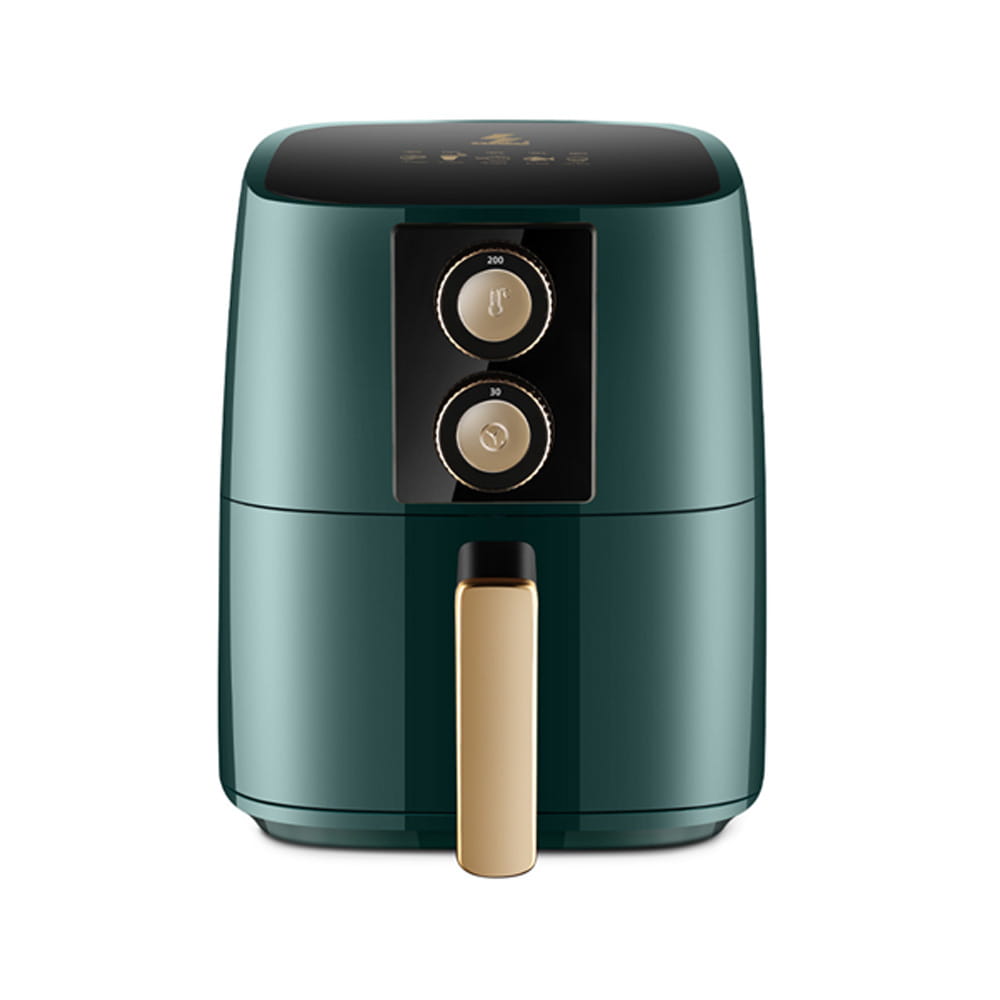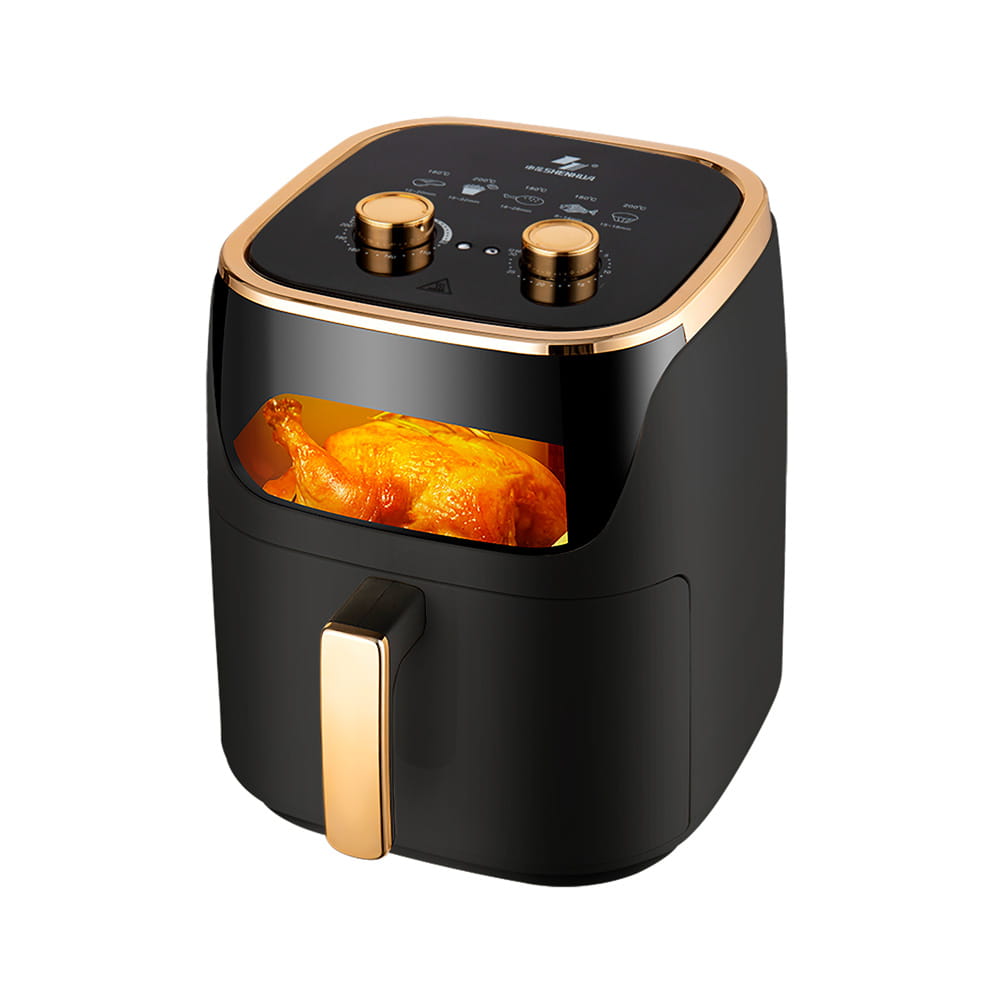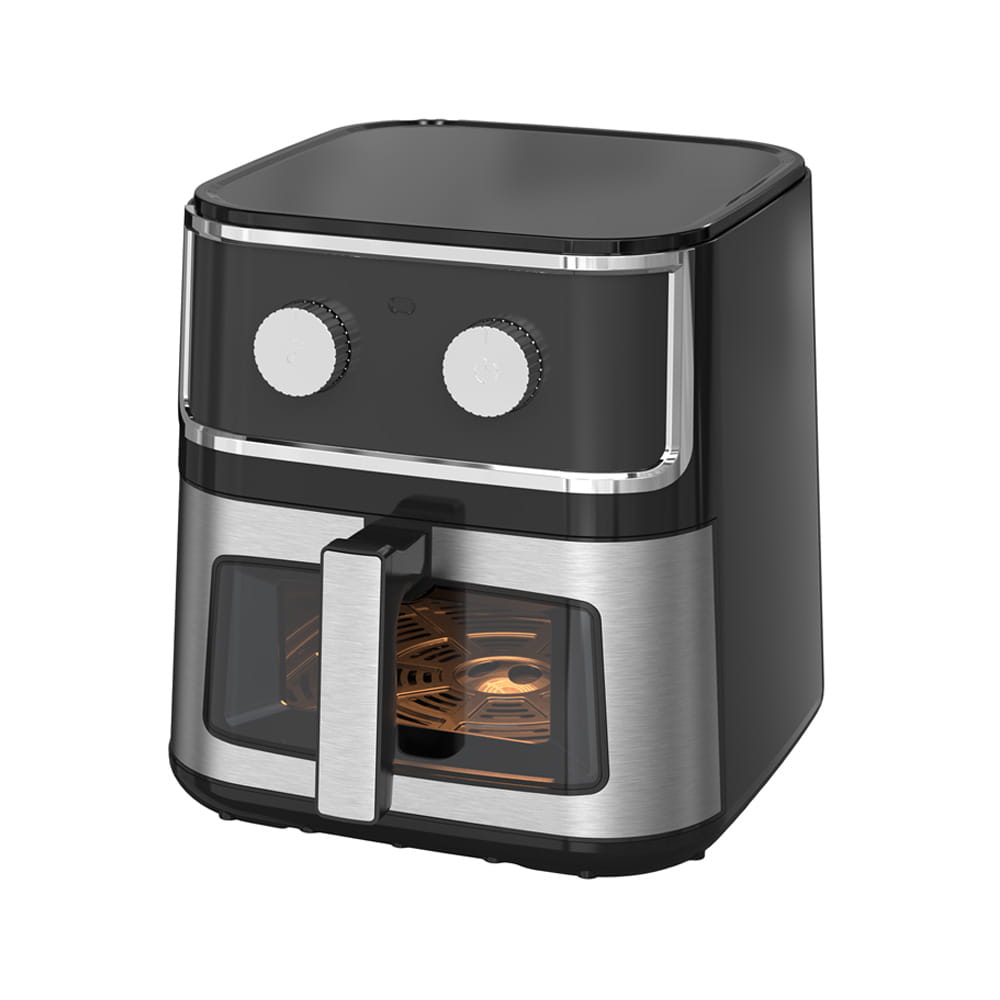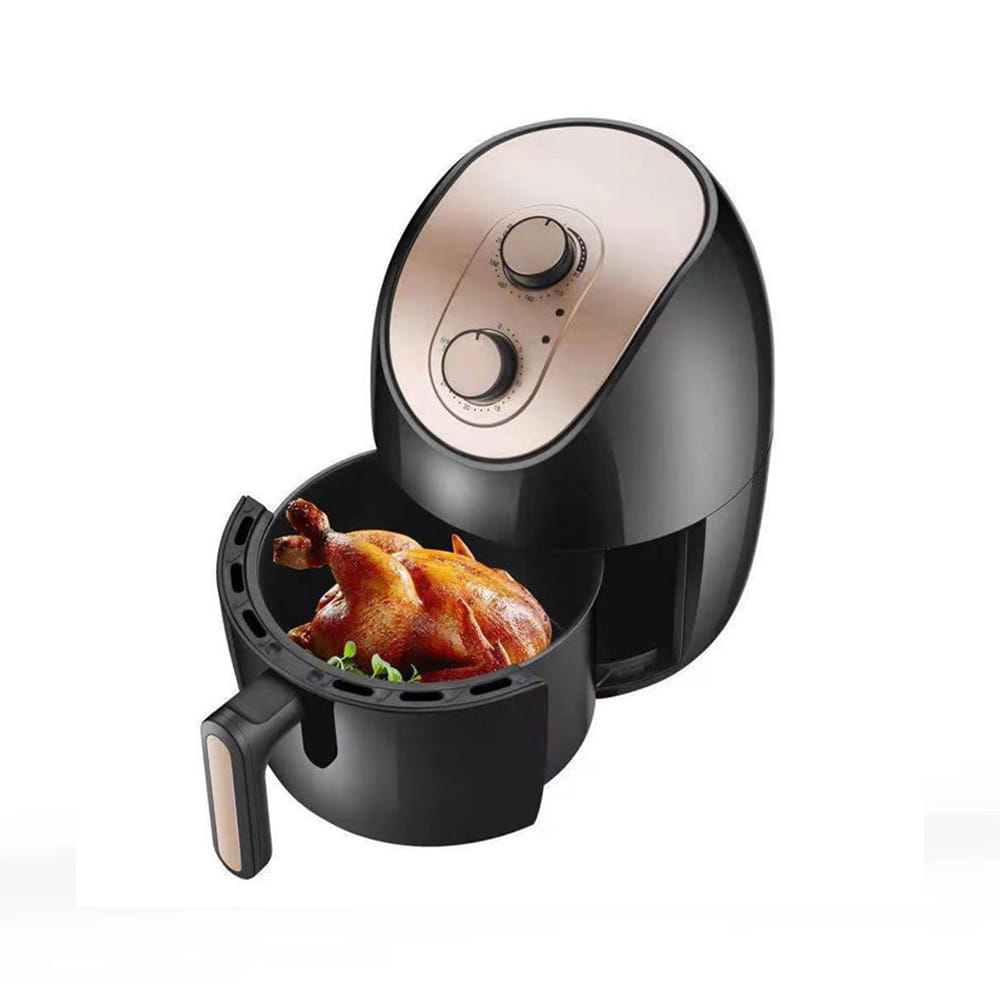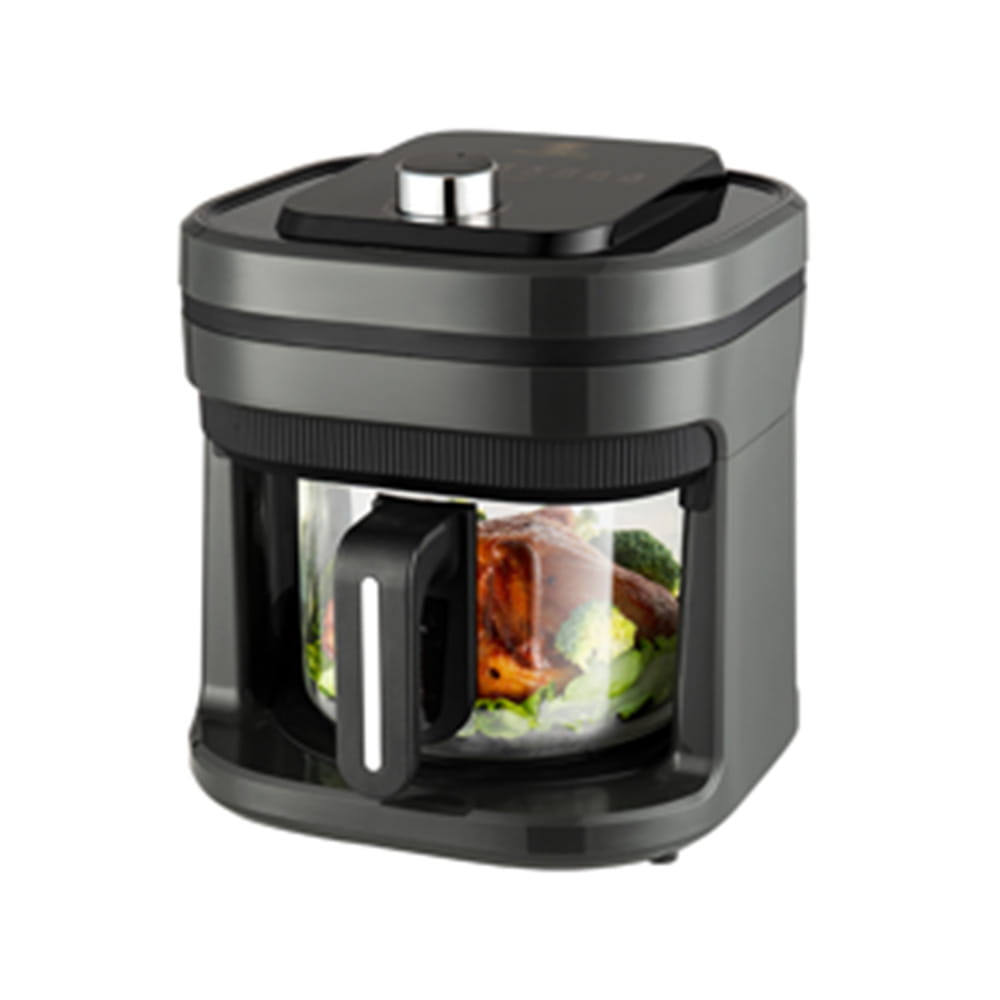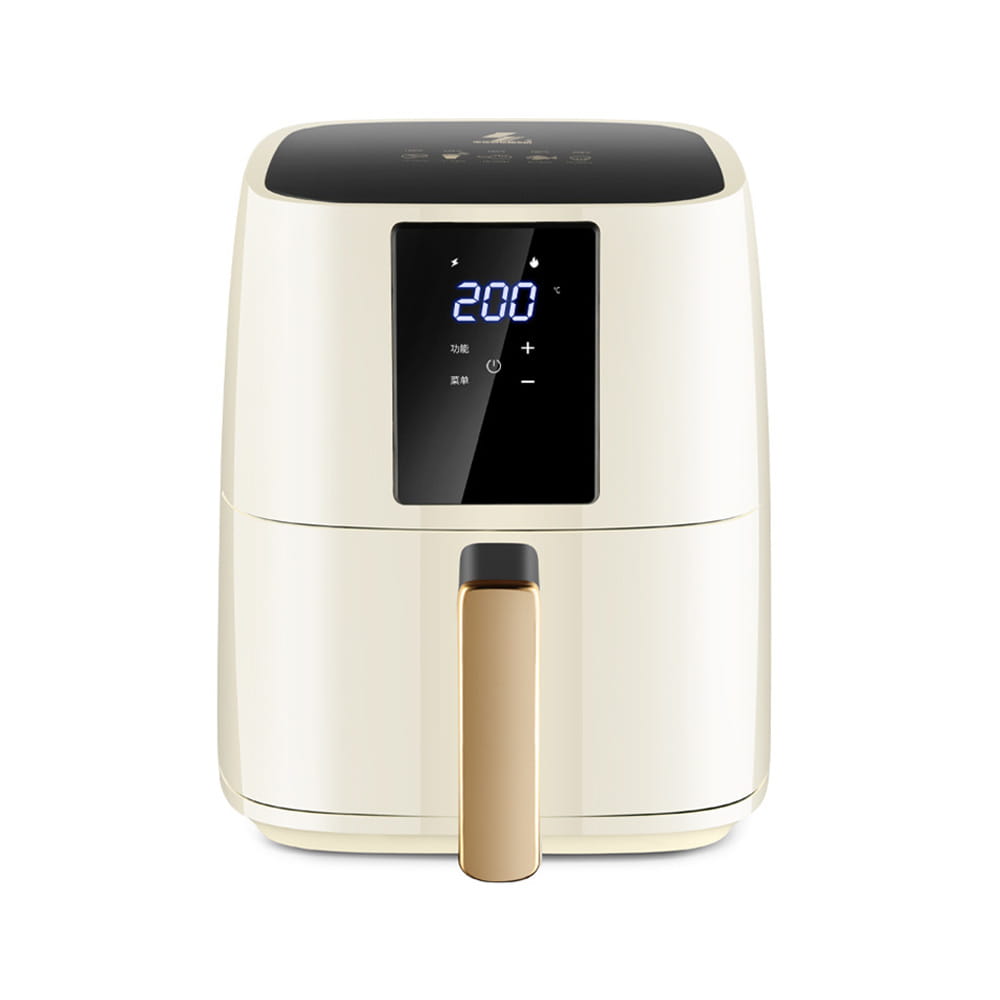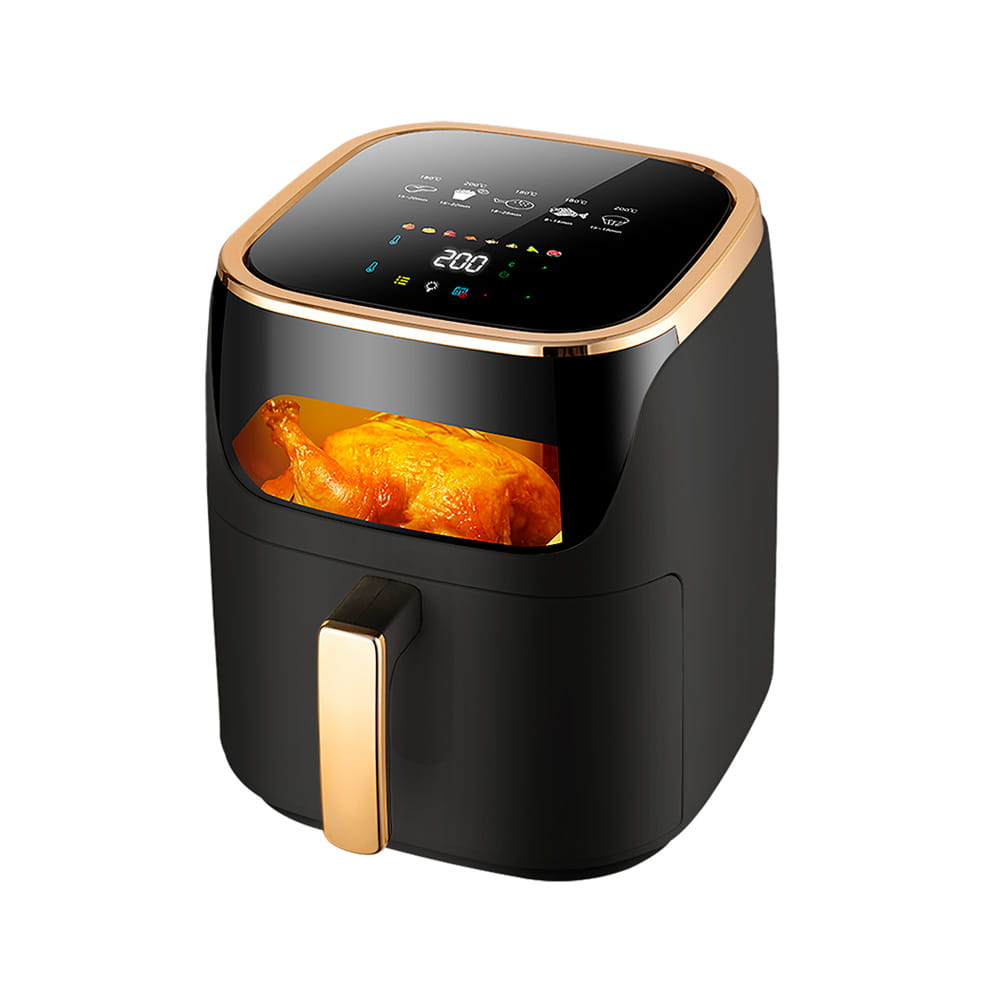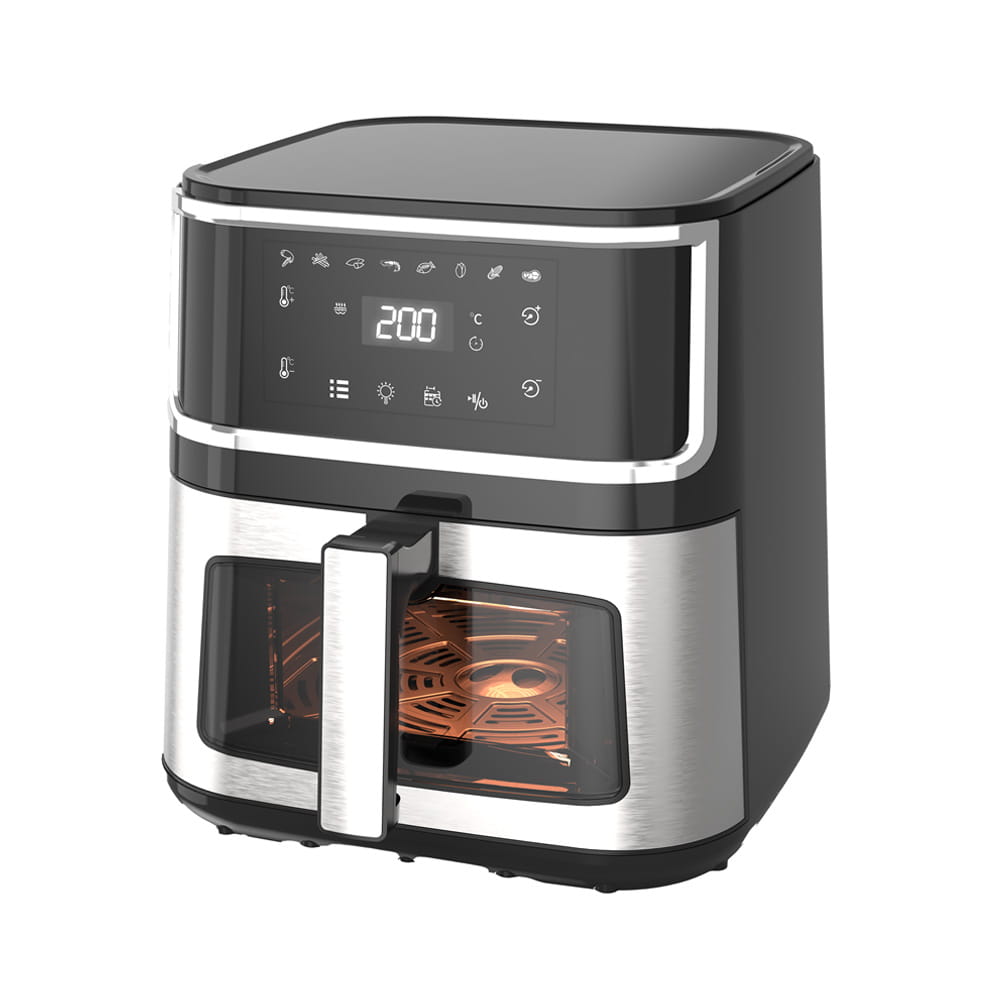I. The Dual Challenge: Visibility Meets Vapor Management
The Invisible Air Fryers, defined by its transparent design, offers a superior user experience by eliminating the need to interrupt the cooking cycle. However, the high-velocity hot air circulation—the very essence of air frying—still generates significant oil vapor and Volatile Organic Compounds (VOCs) when processing high-fat ingredients. Traditional air fryer exhaust systems, which merely vent air through rear or side ports, are insufficient for this premium appliance category.
A truly professional Invisible Air Fryers must integrate an advanced oil fume filtration system that goes beyond basic ventilation. The design imperative is to ensure the exhausted air is "near-pure," requiring dual-stage capture capabilities for both sub-micron particulate matter (like PM2.5) and gaseous odor molecules. This commitment to air quality sets a new industry benchmark.
II. Optimized Exhaust Fluid Dynamics and Pre-Filtration
1. Vortex Capture and Primary Oil Shield
The initial phase of exhaust design focuses on optimizing the internal thermal flow path. Designers must precisely map the airflow dynamics around the cooking basket to guide vaporized oil molecules into a designated vortex capture area immediately after they leave the food surface.
This area is typically located above or adjacent to the heating element and houses the first line of defense: the metal grease shield or pre-filter. This filter utilizes high-density stainless steel or a corrosion-resistant alloy. Its pore size and complex geometry (often corrugated or multi-layered mesh) are meticulously engineered to exploit the inertial impaction principle of oil fumes. Larger oil particles collide with and condense onto the surface. This component is designed to be easily removable and washable, significantly easing the load on subsequent fine-filtration stages.
2. Directional and Low-Noise Air Outlets
Conventional air fryers often have lateral or rear vents, causing localized heat and odor accumulation in the kitchen. Advanced Invisible Air Fryerss employ a directional, low-noise exhaust design, angling the vent upwards. This strategic placement ensures the exhaust plume is more effectively captured and drawn away by the overhead kitchen extractor fan.
Crucially, user satisfaction is maintained through the integration of silent fan technology. By utilizing Brushless DC (BLDC) motors and optimizing the fan blade's geometry, the system can maintain sufficient airflow while reducing operating noise to a market-leading standard, often below 45 decibels (dB), preserving a quiet environment for the user to enjoy the visual cooking process.
III. Multi-Stage Deep Filtration Module Analysis
To capture both ultrafine particulates and gaseous contaminants, a professional system requires at least two stages of deep filtration following the grease shield.
1. High-Performance Particulate Filtration (HPEF)
After initial treatment by the metal shield, the air stream moves into the secondary stage: High-Performance Particulate Filtration (HPEF). Unlike standard HEPA filters, this media must be heat-resistant and oleophobic (oil-repellent). The filter element is typically made from specially treated glass fiber or polypropylene fibers formed into a deeply pleated structure to maximize the capture surface area.
The HPEF module targets ultrafine particulate matter (PM1.0/PM2.5), the most hazardous component of cooking fumes. A professional-grade system is designed to achieve an effective removal rate of at least 90% or higher for PM2.5, guaranteeing the purity of the air being expelled back into the room.
2. Activated Carbon Adsorption Module (Odor and VOCs)
The removal of odors and VOCs (such as Acrylamide) is a primary differentiating factor for premium air fryers. The final stage employs a high-iodine value, honeycomb activated carbon module.
The honeycomb structure is favored over granular carbon to minimize airflow resistance, thereby maintaining exhaust efficiency. The activated carbon undergoes a specialized chemical impregnation process to enhance its capacity. With its vast surface area and well-developed porosity, it utilizes both physical and chemical adsorption mechanisms to highly efficiently capture and neutralize various odor molecules produced during cooking.
Professional design ensures an optimal balance of the carbon's packing density and layer thickness to extend its effective adsorption life, with clear, intelligent reminders for users to perform the necessary periodic replacement.
IV. Smart Maintenance and System Durability
A fully integrated exhaust and filtration system requires an intelligent monitoring function. The unit should include a filter life sensor that tracks the pressure differential across the filters to diagnose the degree of clogging. When the metal pre-filter requires cleaning or the HPEF/Carbon cartridges need replacement, the appliance's control panel will issue a clear user prompt. This smart maintenance protocol is essential for guaranteeing the system's sustained, high-efficiency operation over time.
Finally, all exhaust and filtration components must be engineered for long-term durability. The materials must withstand high heat and corrosion, be easily detachable for maintenance, and ensure the overall Invisible Air Fryers delivers consistent, high-quality air purification throughout its lifespan.

 English
English Español
Español
